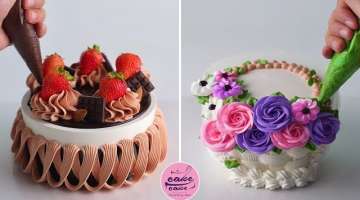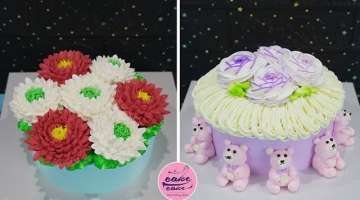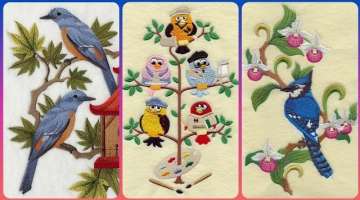Adorable Violet Chinchillas Look Perfectly Round From Behind (16 Pics)
Chinchillas are known for their adorable fluffiness, but did you know they also have perfectly round butts? If you are thinking about adding a violet chinchilla to your family, this is definitely the article you need to read. Also, We’ll take a close look at the history of the violet chinchilla and how the lovely violet coat color was developed.
- 1 | 16

These chinchilla butts look like perfect circles, and it's all thanks to Cameron Holmes of Camerons Chinchillas in the UK. These sweet rodents are being treated well, and their coat naturally looks like this. The species originates from the Andes mountains of South America, their thick fur helps them survive even the harshest climates.
- 2 | 16

To clean themselves, the chinchillas take dust baths in the mornings and love snacks and taking naps. "We turn the lights and say good morning to all of the chinchillas and each of them is waiting by their food hopper waiting for it to be filled up." Check out Cameron's Instagram pages to see more.
- 3 | 16

Chinchillas are rodents belonging to the Chinchillidae family in the suborder Hystricognatha and are related to guinea pigs and degus. There are two species of chinchilla, the short-tailed chinchilla, Chinchilla chinchilla, and the long-tailed chinchilla, Chinchilla lanigera. Chinchillas are native to South America, specifically the dry climate of the Andean mountains of Chile, Bolivia, and Peru. They live in colonies in extensive burrow systems.
- 4 | 16

Both species are listed as critically endangered by the International Union for Conservation of Nature because of a drastic population decline due to illegal hunting for the fur trade and reduction of habitat quality (IUCN, 2013). Early attempts at captive breeding for fur production enjoyed limited success; however, with improvements in colony management, chinchilla fur farms became established. Today, chinchillas are successfully bred in captivity for their fur, for the pet trade, and for biomedical research.
- 5 | 16

How to Care for a Pet Chinchilla? Owning and caring for a chinchilla can be very rewarding, but it is also a big responsibility. If you own or are responsible for a chinchilla, even on a temporary basis, you are required under the Animal Welfare Act to care for them properly. Chinchillas have only been kept as pets for a relatively short time and experts are still learning about how best to care for them.
- 6 | 16

Chinchillas as pets: There is no one perfect way to care for chinchillas but certain essential needs must be met. It is up to you how you look after your chinchilla, but you must take reasonable steps to ensure that you meet all their needs. Before choosing a chinchilla as a pet, you need to consider that they can live for up to 15 years. They are lively animals and mostly nocturnal so they are not ideal as children's pets – and children need to be supervised when handling them.
- 7 | 16

Behavior and Temperament: Chinchillas are largely nocturnal, which means they will be most active at night. Sometimes they are called "crepuscular," meaning their activity peaks at dawn and dusk. In any case, they should be kept in a fairly quiet area during the day. They prefer a consistent routine for handling and feeding and may be stressed out by changes to their routine. Since they are so active and playful, chinchillas need a roomy cage for exercise as well as daily playtime. Warm temperatures are more of a concern for chinchillas than cool temperatures, and owners should take precautions to make sure their pet chinchillas do not become overheated.
- 8 | 16

You must be gentle and consistent to gain the trust of a chinchilla. It can take some time to get any chinchilla used to your hands and being handled, especially if they are older and haven't been handled much. Some chinchillas will never really like to be held much. They'd rather be exploring, or they may prefer to climb on you rather than being restrained, but being able to handle and interact with your chinchilla will make your relationship extra rewarding. Some simple steps can help get the timidest chinchilla used to being handled. Be calm, slow-moving, and patient in the taming of your chinchillas, and they will eventually respond.
- 9 | 16

Housing: Chinchillas are perhaps best known for their incredibly soft, thick, luxurious fur. In the wild, this fur protects them from the elements, but in captivity, it makes them somewhat susceptible to overheating. This must be considered when deciding where to place your chinchilla in the house. A cooler, quiet area of your home is the best place to put a cage for your chinchilla. Summertime temperatures must be monitored to make sure the ambient temperature is not much more than 77 degrees Fahrenheit (25 degrees Celsius).
- 10 | 16

Chinchilla cages must be large, multilevel homes with platforms, ramps, and perches. The larger the cage, the better. The minimum floor space is about 24 by 24 inches, and a tall cage is best; if possible, get one with shelves and ladders that allow this mountain native to climb. A wire is the best cage material; avoid plastic cages or accessories because chinchillas chew and destroy plastic readily. The tray can be lined with wood shavings, preferably pine; avoid cedar and hardwood shavings, such as aspen, and newspapers. Many chinchilla cages have a wire floor, which is nice for cleanliness, but the wire can be hard on chinchilla feet so it's best avoided. Wire floors or shelves can be covered with wood to give the chinchilla's feet a break. A nest box, made of wood, should also be provided.
- 11 | 16

Food and Water: Chinchillas have specific dietary requirements that are different from those of other rodents. They must be fed a high-quality, chinchilla-specific food or their health will suffer. Chinchillas require a lot of roughage, and the diet should mainly consist of good-quality grass hay along with pellets made for chinchillas. Treats should be offered in moderation (no more than 1 teaspoon per day). The digestive system of chinchillas is fairly sensitive so any diet changes should be gradual.
- 12 | 16

Pelleted diets are better than a mixture of loose items. Commercially available loose mixes with chinchilla pellets, seeds, corn, and other food may be nutritionally balanced while they are in the bag, but your chinchilla may not eat all of the parts of the mix. Chinchillas are, in fact, prone to picking out and eating just what they like from a mix, making it less nutritionally balanced. Look for a pelleted diet, formulated specifically for chinchillas that are 16 to 20 percent protein, low in fat (2 to 5 percent), and high in fiber (15 to 35 percent).
- 13 | 16

Introducing chinchillas: To introduce a new chinchilla to one you already have, put them in separate cages side by side, about 10cm apart. This way they can smell each other without physical contact. Put their beds at opposite ends of the cages so they feel they have somewhere to escape to. Give each chinchilla its own dust bath, but swap these over daily so that they get used to each other's scent.
- 14 | 16

Over a week or so, move the cages and beds closer until the chinchillas are sleeping next to each other. It's important to introduce them slowly to avoid fights. When the two seem to be living happily side by side, put the existing chinchilla into the new chinchilla's cage. They may take to each other straight away or there may be some initial squabbling. If this seems serious, separate them again for a few more days, but things should eventually settle down. It's usually easier to introduce animals of the opposite sex (make sure the male is neutered first) or to introduce a young chinchilla to an adult.
- 15 | 16

Exercise and training chinchillas: Chinchillas are nocturnal, so they'll be asleep for most of the day. They are most active in the early evening so this is a good time to get them out for a run. Make sure they're supervised because they like to explore everything with their teeth and this can include electrical wires. Before allowing your chinchillas out to run around the house, you need to be confident that you can catch them again. Chinchillas can become tame with a little time and training. When your chinchilla comes forward, stroke it gently under the chin. Do not try to catch them the first time this happens, just give them a treat and let go so they don't associate you with being caught. Raisins are one of their favourite treats so offer these from your hand. Be careful because a frightened chinchilla will stand on its back legs and spray urine in the face of any potential threat!
- 16 | 16

Once your chinchilla is confidently taking treats and allowing you to stroke it, you can let it out. Start with quite a small space and then try offering a treat so your pet learns to come to your hand. Don't try to catch your chinchilla yet but give the treat and let go again a few times. To pick up your chinchilla, support the whole body on your hand and gently restrain them by holding the base of the tail. Never pick a chinchilla up by the tail – this can hurt them and could cause a serious injury. A frightened chinchilla that is being too strongly held will shed handfuls of fur so, if this happens, you are being far too rough.
Related Galleries



















